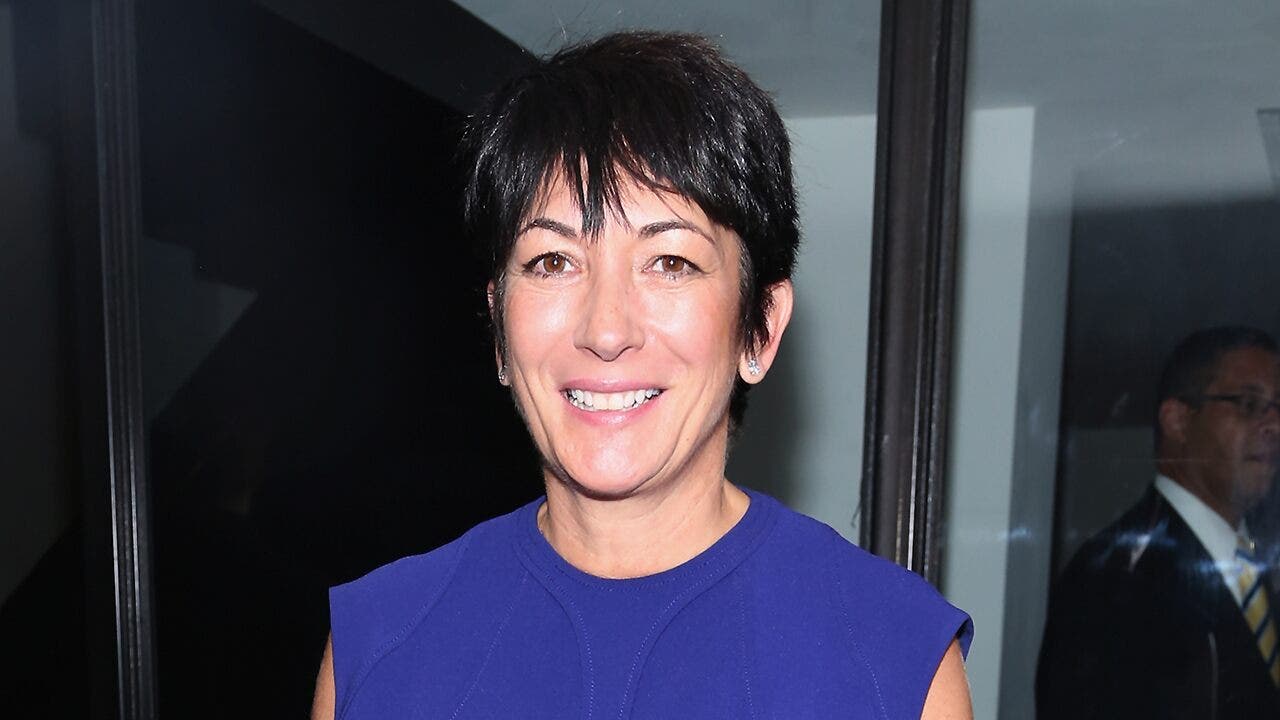Finance
Ask Each Other These 7 Questions To Gauge Your Financial Compatibility

Young couple hiding savings from each other.
getty
Financial harmony is a key pillar in any successful relationship, yet it’s often overlooked or shrouded in discomfort. How couples manage their finances can significantly impact the overall health and direction of their partnership. Therefore, it’s essential to engage in open and honest discussions about financial habits, goals, and expectations.
The following questions are designed to probe the depths of financial compatibility between you and your partner. They offer a comprehensive guide to understanding each other’s financial perspectives, laying a foundation for mutual respect, aligned goals, and a harmonious future together.
1. How Do You Manage Your Finances, Including Both Savings And Spending?
Understanding each other’s approaches and underlying philosophies regarding money management is crucial in assessing financial compatibility.
Does one prefer more frugal living, saving, and cutting unnecessary expenses, while the other enjoys splurging on experiences or luxury items? These habits can reflect broader values and priorities, making understanding and respecting each other’s preferences crucial.
The conversation should also explore the tools and methods used for financial management. Do you use budgeting apps, spreadsheets, or ledgers? This aspect reveals how you track and control your financial flows, providing a window into your organizational skills and attitudes toward money.
Moreover, this can lead to practical decisions about budgeting as a couple. It’s an opportunity to align on a spending plan that accommodates individual desires and joint financial health.
2. What Are Your Short- And Long-Term Financial Goals?
Short-term goals are those that you wish to achieve within a year or two, such as saving for a vacation, purchasing a new gadget, or paying off a small debt. They reflect your current priorities and lifestyle choices.
Long-term financial goals, on the other hand, are about the bigger picture and future planning. These include buying a house, saving for retirement or children’s education, or building an investment portfolio.
Consider how these goals align with your current financial situations and what adjustments are necessary to achieve them. For instance, if one partner dreams of early retirement while the other is focused on investing in a start-up, how do these distinct goals coexist and complement each other in your joint financial planning?
Moreover, this conversation is about setting goals and devising a concrete, actionable plan that includes regular saving habits, investment decisions, and even lifestyle adjustments. Aligning these financial aspirations and strategies is essential for building a future both partners are invested in and excited about.
3. How Do You View And Manage Personal Debt?
For some, carrying debt is a normal part of financial life, used to build credit or make significant purchases like a home or car. For others, debt might be a source of stress, and they may prioritize paying it off as quickly as possible.
It’s important to discuss the types of debt each person might have, such as student loans, credit card debt, or mortgages. How do you approach paying off these debts? Do you make minimum payments, pay extra to clear debt quickly, or have a structured plan for debt reduction? This discussion can also extend to future debt, like willingness to take on a mortgage or loans for other significant investments.
Moreover, how each person views debt can impact major life decisions and day-to-day financial management. The key is to develop a mutual understanding and strategy that respects both of your comfort levels and financial goals to ensure that debt doesn’t become a point of contention in your relationship.
4. What Are Your Strategies And Attitudes Towards Investing?
Their investment approach can reveal much about a person’s risk tolerance and long-term financial planning. Some might be aggressive investors, comfortable with high-risk, high-reward scenarios, while others may prefer conservative, low-risk investment options like bonds or savings accounts.
Discussing investment strategies involves understanding your knowledge level, interest in financial markets, and investment goals. This conversation can also highlight how much each of you is willing to allocate towards investments from your incomes, balancing between immediate financial needs and future gains.
Remember that it is not about convincing each other of the right way to invest but rather about understanding each other’s comfort levels and finding a mutual path that aligns with your financial goals and risk tolerances. It’s an opportunity to learn from each other, diversify investment approaches, and build a unified strategy for financial growth.
5. How Open Should You Be About Your Finances?
Probe into how forthcoming you and your partner are about your financial situation. Gauge each other’s perspectives on sharing sensitive financial information, including salary details and savings accounts to debt levels and investment portfolios.
Are there hesitations or concerns about revealing the full extent of your financial situations? How do you feel about discussing potentially challenging topics like outstanding debts or significant assets?
The degree of transparency lays the groundwork for mutual trust. It fosters a deeper level of partnership where financial decisions are made collaboratively.
6. How Should Financial Responsibilities Be Divided Or Shared In Your Relationship?
You should explore various aspects, from paying bills, contributing to savings and investments, and managing household expenses. This also extends to handling unexpected financial situations, like emergencies or sudden expenses.
The conversation should consider different models of financial contribution: Is it based on each person’s income proportionally, or is there a preference for an equal split regardless of earnings? Should you keep individual or joint accounts? How do both partners feel about contributing to shared goals, like saving for a house or planning vacations?
Furthermore, discussing the division of financial responsibilities is about finding a comfortable system for both parties. Whether it’s having individual, joint, or hybrid accounts, the goal is to respect each person’s contributions and maintain balance and fairness.
7. What Are Your Views On Supporting Family Members Financially And Engaging In Charitable Giving?
It is essential to understand shared values and priorities in a relationship. This question goes beyond mere financial planning; it touches upon deeper aspects of generosity, responsibility, and personal values. It involves discussing how each of you feels about providing financial assistance to family members, whether for regular support, in times of need, or for specific goals like education.
This conversation should also extend to attitudes towards philanthropy and charitable contributions. Do both partners prioritize giving to causes or organizations? Is there a preference for local, national, or international charities? How does each person decide the amount and frequency of their donations? These choices often reflect personal convictions and ethical considerations, making it a significant topic of discussion for couples.
Balancing financial support for family and charitable giving with personal financial goals can be complex. It requires careful consideration and open communication to ensure that these decisions align with both individual and shared financial plans.
Final Thoughts
Each of these seven questions opens up avenues for deeper understanding and mutual growth. They are transformational, offering a chance to build a shared financial vision grounded in trust, respect, and aligned objectives.
This dialogue is an ongoing process. Financial situations and goals evolve over time, as do individual perspectives. Continual communication is key. It’s about finding a balance where both partners feel heard, respected, and supported in their financial choices.
In the end, these conversations are not just about securing financial health but also about strengthening the foundation of the relationship itself. By confronting financial issues openly and constructively, couples can build not just wealth, but also a deeper, more resilient bond.

Finance
Fulton Financial’s (NASDAQ:FULT) Q2: Strong Sales

Regional banking company Fulton Financial (NASDAQ:FULT) reported Q2 CY2025 results topping the market’s revenue expectations , but sales fell by 1.9% year on year to $328.4 million. Its GAAP profit of $0.53 per share was 24.7% above analysts’ consensus estimates.
Is now the time to buy Fulton Financial? Find out in our full research report.
-
Net Interest Income: $254.9 million vs analyst estimates of $255.1 million (5.5% year-on-year growth, in line)
-
Net Interest Margin: 3.5% vs analyst estimates of 3.4% (6.2 basis point beat)
-
Revenue: $328.4 million vs analyst estimates of $318 million (1.9% year-on-year decline, 3.3% beat)
-
Efficiency Ratio: 57.1% vs analyst estimates of 61% (3.9 percentage point beat)
-
EPS (GAAP): $0.53 vs analyst estimates of $0.43 (24.7% beat)
-
Market Capitalization: $3.56 billion
“I’m proud that our team has delivered a new company record, with operating net income of $100.6 million, or $0.55 per diluted share, this past quarter,” said Curt Myers, Chairman and CEO of Fulton.
Tracing its roots back to 1882 in the heart of Pennsylvania, Fulton Financial (NASDAQ:FULT) is a financial holding company that provides banking, lending, and wealth management services to consumers and businesses across five Mid-Atlantic states.
In general, banks make money from two primary sources. The first is net interest income, which is interest earned on loans, mortgages, and investments in securities minus interest paid out on deposits. The second source is non-interest income, which can come from bank account, credit card, wealth management, investing banking, and trading fees.
Over the last five years, Fulton Financial grew its revenue at a solid 8.4% compounded annual growth rate. Its growth beat the average bank company and shows its offerings resonate with customers.
We at StockStory place the most emphasis on long-term growth, but within financials, a half-decade historical view may miss recent interest rate changes, market returns, and industry trends. Fulton Financial’s annualized revenue growth of 8.3% over the last two years aligns with its five-year trend, suggesting its demand was predictably strong.
Note: Quarters not shown were determined to be outliers, impacted by outsized investment gains/losses that are not indicative of the recurring fundamentals of the business.
This quarter, Fulton Financial’s revenue fell by 1.9% year on year to $328.4 million but beat Wall Street’s estimates by 3.3%.
Net interest income made up 76.1% of the company’s total revenue during the last five years, meaning lending operations are Fulton Financial’s largest source of revenue.
Finance
Reeves hails ‘instant impact’ for aspiring homeowners as red tape is cut

First-time buyers are set to see an “instant impact” from the drive to kickstart economic growth, Chancellor Rachel Reeves is expected to say.
More mortgages will be available at more than 4.5 times a buyer’s income following recent Bank of England recommendations that some lenders can offer more high loan-to-income mortgages if they choose to.
This will create up to 36,000 additional mortgages for first-time buyers over the first year, the Government said.
Britain’s biggest building society – Nationwide – announced last week that it is aiming to increase its high loan-to-income lending limit.
From Wednesday, eligible first-time buyers can apply for Nationwide’s Helping Hand mortgage with a £30,000 salary, down from £35,000, and joint applicants with a £50,000 combined salary – down from £55,000.
It is estimated this will support an additional 10,000 first-time buyers each year.
The changes will sit alongside the creation of a permanent mortgage guarantee scheme, delivering on a manifesto commitment, and a review of Financial Conduct Authority (FCA) lending rules that could allow prospective buyers’ records of paying rent on time to be used to show they can afford mortgage repayments.
Reforms will be outlined in Leeds ahead of Ms Reeves’s Mansion House speech on Tuesday evening.
Speaking in the City of London, the Chancellor is expected to say: “I welcome the recent changes the (Bank of England) Financial Policy Committee has announced to the loan-to-income limit on mortgage lending, which the PRA (Prudential Regulation Authority) and FCA are implementing immediately.
“With an instant impact for consumers, such as Nationwide offering its Helping Hand mortgage to more first-time buyers – supporting an additional 10,000 each year.”
Ms Reeves is expected to add: “Today, I have placed financial services at the heart of the Government’s growth mission.
“Recognising that Britain cannot succeed and meet its growth ambitions without a financial services sector that is fighting fit and thriving.
“And I have been clear on the benefits that that will drive.
“With a ripple effect that will drive investment in all sectors of our economy and put pounds in the pockets of working people.”
Nicholas Mendes, mortgage technical manager at broker John Charcol, said: “The decision to widen access to Nationwide’s Helping Hand mortgage by lowering the income thresholds will offer an immediate and practical benefit to a group of people who have often found themselves just on the wrong side of affordability criteria.
Finance
Fulton Financial Earnings: What To Look For From FULT

Regional banking company Fulton Financial (NASDAQ:FULT) will be announcing earnings results this Tuesday after the bell. Here’s what to expect.
Fulton Financial beat analysts’ revenue expectations by 1.8% last quarter, reporting revenues of $318.4 million, up 20.6% year on year. It was a very strong quarter for the company, with an impressive beat of analysts’ EPS estimates and a decent beat of analysts’ tangible book value per share estimates.
Is Fulton Financial a buy or sell going into earnings? Read our full analysis here, it’s free.
This quarter, analysts are expecting Fulton Financial’s revenue to decline 5% year on year to $318 million, a reversal from the 22.4% increase it recorded in the same quarter last year. Adjusted earnings are expected to come in at $0.45 per share.
Analysts covering the company have generally reconfirmed their estimates over the last 30 days, suggesting they anticipate the business to stay the course heading into earnings. Fulton Financial has missed Wall Street’s revenue estimates twice over the last two years.
With Fulton Financial being the first among its peers to report earnings this season, we don’t have anywhere else to look to get a hint at how this quarter will unravel for banks stocks. However, there has been positive investor sentiment in the segment, with share prices up 10.3% on average over the last month. Fulton Financial is up 11.2% during the same time and is heading into earnings with an average analyst price target of $19.80 (compared to the current share price of $19.11).
Here at StockStory, we certainly understand the potential of thematic investing. Diverse winners from Microsoft (MSFT) to Alphabet (GOOG), Coca-Cola (KO) to Monster Beverage (MNST) could all have been identified as promising growth stories with a megatrend driving the growth. So, in that spirit, we’ve identified a relatively under-the-radar profitable growth stock benefiting from the rise of AI, available to you FREE via this link.
StockStory is growing and hiring equity analyst and marketing roles. Are you a 0 to 1 builder passionate about the markets and AI? See the open roles here.
-

 Culture1 week ago
Culture1 week agoTry to Match These Snarky Quotations to Their Novels and Stories
-

 News6 days ago
News6 days agoVideo: Trump Compliments President of Liberia on His ‘Beautiful English’
-

 News1 week ago
News1 week agoTexas Flooding Map: See How the Floodwaters Rose Along the Guadalupe River
-
Business1 week ago
Companies keep slashing jobs. How worried should workers be about AI replacing them?
-
Finance1 week ago
Do you really save money on Prime Day?
-

 Technology1 week ago
Technology1 week agoApple’s latest AirPods are already on sale for $99 before Prime Day
-

 News5 days ago
News5 days agoVideo: Clashes After Immigration Raid at California Cannabis Farm
-

 Politics1 week ago
Politics1 week agoJournalist who refused to duck during Trump assassination attempt reflects on Butler rally in new book




















